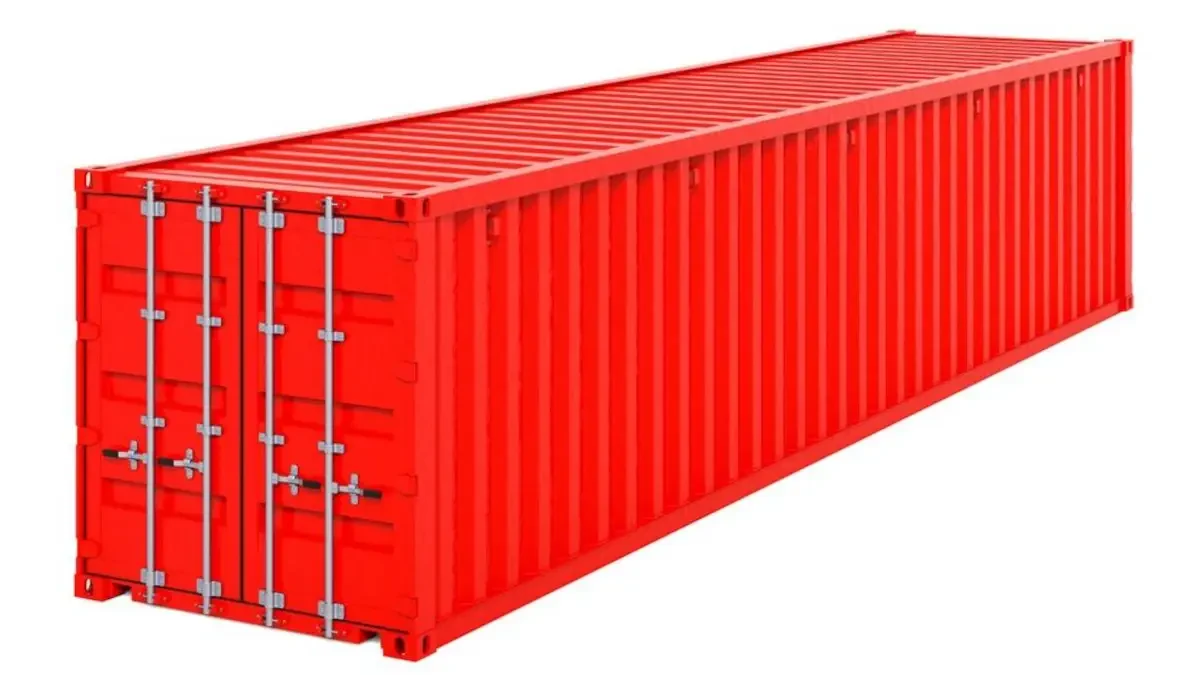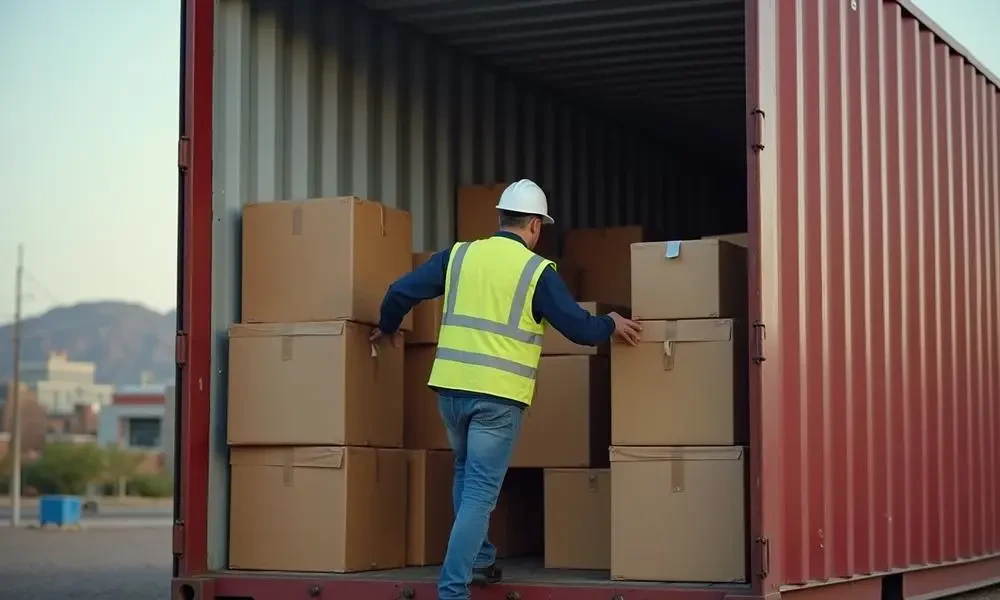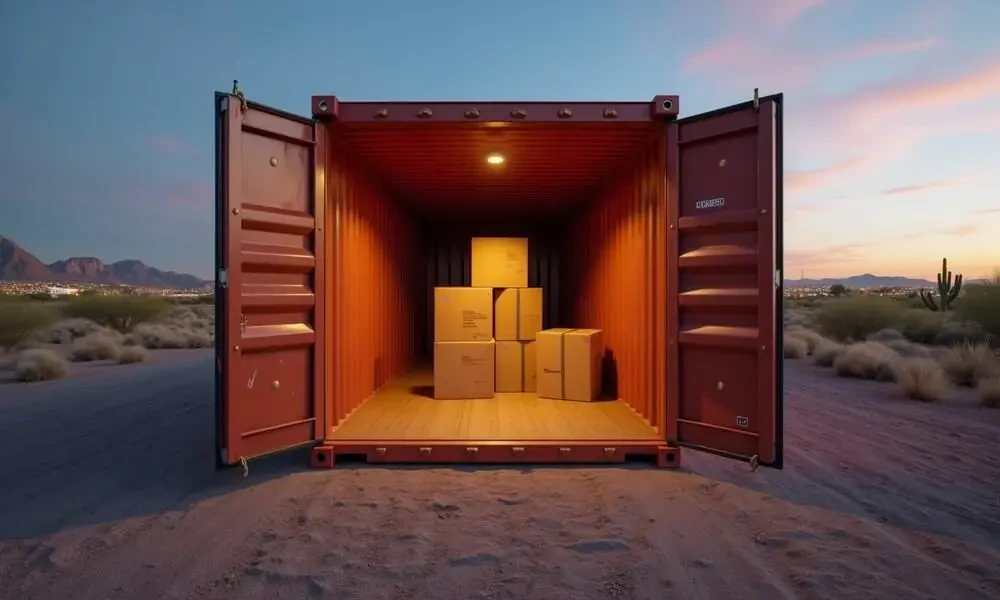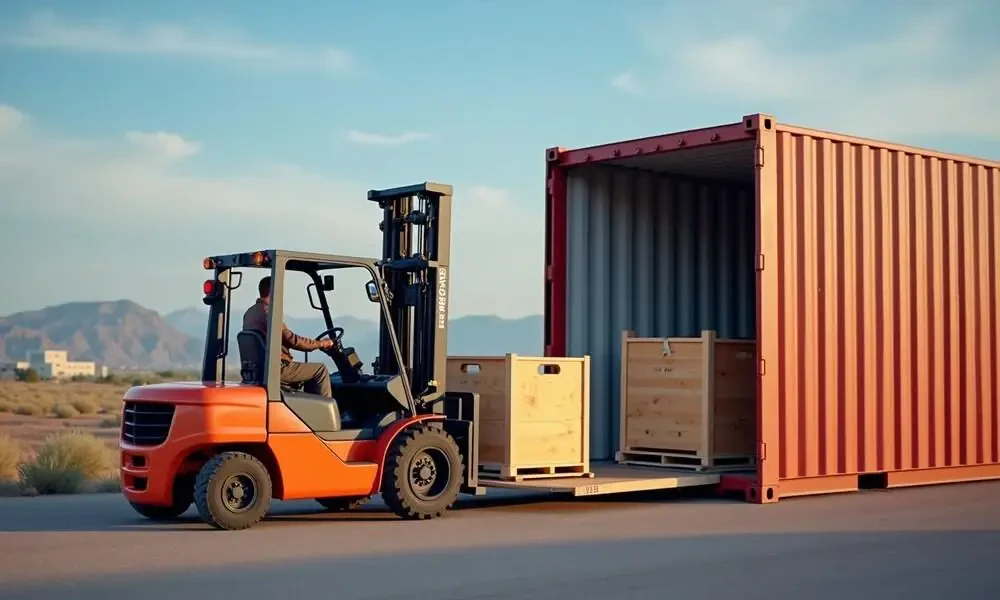Published by Chris Townsend
Last updated Jun, 07 2025

When it comes to relocating your possessions abroad, using a shipping is generally the most cost-effective option. Though, before you begin the booking process, it’s in your best interest to do research to find out the size you need, and how to pack it. Aside from the standard 20-foot container, the 40-foot container is often the most popular choice for families with large homes or those with vehicles that need to be transported.
Overall, relocating overseas with 40 foot shipping containers is a good choice, simply due to its size and the amount of goods it can hold. But, loading for an international move can be a challenging endeavor when your goal is to avoid property damage. So, how do you go about packing a 40-foot container? That’s what we’re here to answer.

Dimensions of a 40 Foot Container
For starters, it’s important to understand your container options and how much space you will have to work with. There are two main types of intermodal shipping containers: the 20-foot container and the 40-foot container. For our purposes, however, we are going to focus on 40-foot containers.
Also called FEU, a 40-foot container is equal to two TEUs. TEU stands for ‘twenty-foot equivalent unit’ and FEU refers to ‘forty-foot equivalent unit’. These terms are used to describe shipping size, and are also the standard measurement for the volume of goods transported in the shipping industry.
The dimensions of a 40-foot container are typically measured in terms of the imperial system (feet), and are as follows:
- Interior Dimensions: 39’ 6” long x 7’ 9” wide x 7’ 10” high
- Exterior Dimensions: 40’ long x 8’ wide x 8’ 6” high
- Doors: 7’8″ tall x 7’5″ wide
- Usable Capacity: 67.7 cubic meters, or around 2,390 cubic feet.
Knowing the size of the door is especially useful information, as it will help you determine exactly what you can fit inside. While there are different size containers out there, both the 20-foot and 40-foot containers are the industry standard.
If you need additional space, you may want to consider opting for a 40-foot High Cube Container. The sole difference between these containers and the standard 40-foot containers is an extra 27 centimeters in height. They are 2.65 meters high internally, which adds an additional 9 cubic meters of space. While this may not seem like a lot, it typically lets importers fit a whole extra row of items.

40 Foot Container Loading Options
Thankfully, most shipping companies will do the loading and packing of your container for you. However, you can still choose to do these tasks yourself. If you’ve decided to pack your own 40-foot container, you have essentially two options based on where you live: a ‘live load’ or a ‘drop and pick’.
- A ‘live load’ describes the process of a trucker bringing the container to your home and then you have two hours to load and pack it yourself. If the process takes longer than two hours, you will have to pay for each additional hour of loading time – which costs approximately $75 per hour.
- A ‘drop and pick’ involves the trucker leaving the shipping at your home for two full days. This option generally costs about twice as much as live load, but comes with the advantage of more time to securely pack your belongings.
If you are located near a port, the cost of drop and pick is usually not much more than live load. Regardless, the additional cost may be worth it so you can take your time with the loading process. Though, if you live far from the nearest port, live load may simply be the only option available to you.
Keep in mind that the 40-foot container is going to arrive at your home on a chassis that is about four feet off of the ground. In order to load it effectively, you’ll need some really strong helpers and/or a loading ramp. It’s also crucial that the area where the container is placed is solid and level. If you don’t have a driveway or the container will not fit, make sure that you secure parking in front of your home ahead of time.

How Do You Pack a 40 Foot Container?
Once you’ve decided on a loading method, follow these tips to securely and successfully pack your 40-foot container:
- Plan ahead regarding how you will load the container to maximize the internal space.
- Disassemble items that can be easily re-assembled when the container arrives at its destination. This will help free up space in the container.
- Be prepared on loading day with all of the furniture and boxes packed up and ready to go. To maximize time and efficiency, arrange them in your home in the order in which they will be loaded into the container.
- Wrap everything tightly with bubble packaging, moving blankets, cardboard, or even old comforters, linens, and towels to ensure the protection of your belongings for the long journey.
- Make use of pallets. Organizing your furniture, boxes, and other goods on standardized platforms helps simplify the loading and unloading processes. Pallets are easier to maneuver and also help to divide the internal space of the container into more manageable sections. That way, you’ll have an easier time measuring and planning out how you’re going to use up the space inside.
- Pack heavier things on the bottom, and lighter things on top. This prevents the lighter objects from getting damaged or crushed, while also keeping the entire base of the container steady while in transit.
- Be mindful of the doors. The doors that your 40-foot container has will directly influence how your goods are packed and loaded. If there is only one set of cargo doors, you won’t be able to easily access the back after everything is packed. So, make sure you plan accordingly. Double door containers, however, will give you access to both ends of the container as needed. Side-open doors are another option for your container, which gives you access to your items along the container’s length.
- Place the boxes you’ll need immediately close to the doors. That way, you’ll have easy access to the essentials immediately upon unloading.
- Pack the goods tightly inside the container, so that nothing can move. Pack in tiers, loading the container from top to bottom. Whenever you notice a space in the tiers, go search for an item that can fill it. Oftentimes, pillows, blankets, or even an empty box can fit into these gaps. It is crucial that everything is snug inside of the container so that nothing can move while in transit.
Standard 40-foot containers are great for big overseas relocations, companies that are importing a large volume of materials, or simply as a temporary storage solution. However, in order to get the most out of your 40-foot container, you must know how to pack it so that you maximize the space and ensure the protection of your belongings.

How Much Can You Fit in a 40 Foot Container?
A 40-foot container provides a considerable amount of storage space. Based on the aforementioned dimensions, a 40-foot container can fit approximately the contents of a three- or four-bedroom home. To look at things from a different perspective, you can fit a whopping 400 mattresses inside of a 40-foot container. These containers fit an average of 22 standard pallets, which equates to roughly 1,320 boxes!
Though, it’s important to note that how much you can actually fit in a 40-foot container is going to depend on how well you’ve organized the things inside. With strategic planning, you should be able to pack a 40-foot container to 90% capacity.
Have more questions about how to pack a 40-foot container or want to hire someone to do it for you? Look no further than Three Movers! Give us a call today.



